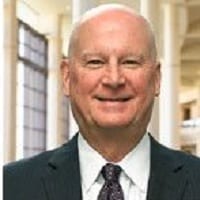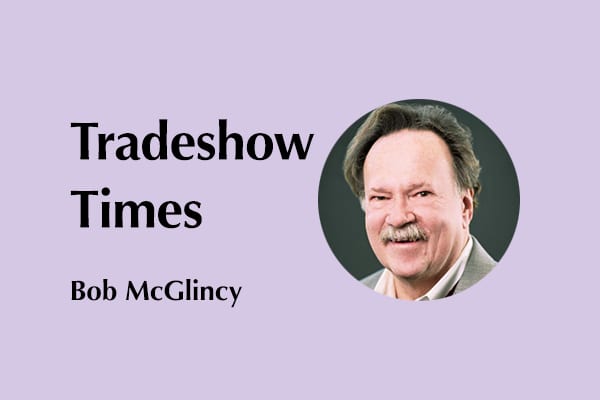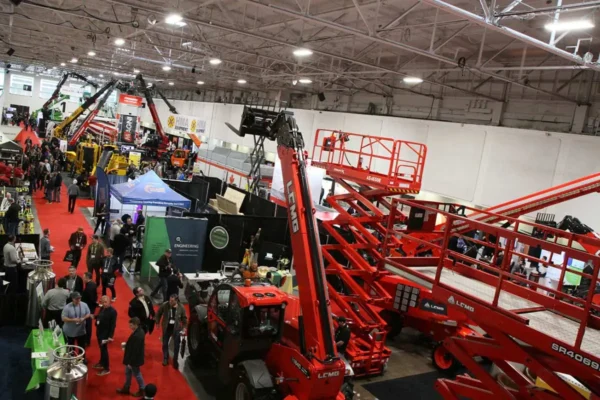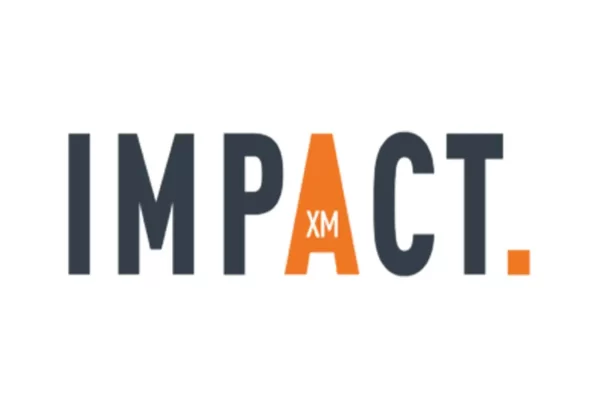Tradeshows are a unique three-dimensional environment, combining elements of marketing, advertising and sales. They stimulate the senses, engage audiences and energize the economy.
Tradeshows bring targeted buyers and sellers together in one place, at one time, and magically transform an empty convention center into a magnificent, marketing extravaganza—a business carnival pulsating with energy and excitement.
Read below what some industry experts have to say about how and why tradeshows work, as well as a few examples and comments on the future:
 David Doft, CFO, Emerald says, “Tradeshows are a crucial place for small businesses to gain new customers. Ultimately, we are a lead-generation business. People come to tradeshows to find new customers, and buyers come to discover new products. In fact 80 percent of the 1.7 mil;ion businesses that exhibit at tradeshows during the year are small businesses. And of those, more than 40 percent find tradeshows to be their number one provider of leads in terms of the return on investment of their marketing expense. We are extremely enthusiastic about the return of the tradeshow business. The reality is that our industry and our business serves a really important purpose of bringing buyers and sellers together in order to conduct commerce. We are seeing an enthusiastic return by many exhibitors and many buyers to our events. In the second half of the year, we have 85 events scheduled.”
David Doft, CFO, Emerald says, “Tradeshows are a crucial place for small businesses to gain new customers. Ultimately, we are a lead-generation business. People come to tradeshows to find new customers, and buyers come to discover new products. In fact 80 percent of the 1.7 mil;ion businesses that exhibit at tradeshows during the year are small businesses. And of those, more than 40 percent find tradeshows to be their number one provider of leads in terms of the return on investment of their marketing expense. We are extremely enthusiastic about the return of the tradeshow business. The reality is that our industry and our business serves a really important purpose of bringing buyers and sellers together in order to conduct commerce. We are seeing an enthusiastic return by many exhibitors and many buyers to our events. In the second half of the year, we have 85 events scheduled.”
 Kai Hattendorf, managing director/CEO, UFI, The Global Association of the Exhibit Industry says, “Tradeshows work because they are the campfires for industries and industry communities. They are the place where people go to meet, to catch up, to do business, to learn, and many other reasons. Because especially for small and medium enterprises they are the ‘one stop shop’ for success. Here they fill their order books, and that’s why this is where they invest the marketing dollars.”
Kai Hattendorf, managing director/CEO, UFI, The Global Association of the Exhibit Industry says, “Tradeshows work because they are the campfires for industries and industry communities. They are the place where people go to meet, to catch up, to do business, to learn, and many other reasons. Because especially for small and medium enterprises they are the ‘one stop shop’ for success. Here they fill their order books, and that’s why this is where they invest the marketing dollars.”
 Robin Tobias, president, All Wireless & Prepaid Expo says, “After our long, two-year COVID hiatus, and two reschedules at Caesars Palace, we didn’t know what to expect this past August. Exhibit sales were steady, but would attendees show up? With the delta variant exploding and brand-new restrictions in Las Vegas, it was a guessing game. But they did show up! We had an attendance record, bringing our registered attendee count to more than 3,000. And the event felt safe. Although we were barraged with calls the week prior to the event asking if we were being canceled, once there, participants told me that they felt safe on our hall floor. Thanks to Governor Sisolak’s indoor mask mandate, all attendees were masked up and most didn’t seem to mind. Moreover, they were gracious. After such a long period with no face- to-face interaction, our exhibitors and attendees were thanking us for sticking it out, and not going virtual. It was a hard road, but worth the wait—and worth all the extra precautions. A safe, successful event can happen during COVID. We just did it!”
Robin Tobias, president, All Wireless & Prepaid Expo says, “After our long, two-year COVID hiatus, and two reschedules at Caesars Palace, we didn’t know what to expect this past August. Exhibit sales were steady, but would attendees show up? With the delta variant exploding and brand-new restrictions in Las Vegas, it was a guessing game. But they did show up! We had an attendance record, bringing our registered attendee count to more than 3,000. And the event felt safe. Although we were barraged with calls the week prior to the event asking if we were being canceled, once there, participants told me that they felt safe on our hall floor. Thanks to Governor Sisolak’s indoor mask mandate, all attendees were masked up and most didn’t seem to mind. Moreover, they were gracious. After such a long period with no face- to-face interaction, our exhibitors and attendees were thanking us for sticking it out, and not going virtual. It was a hard road, but worth the wait—and worth all the extra precautions. A safe, successful event can happen during COVID. We just did it!”
 Mark Yuska, president, Alliance Nationwide Exposition says, “Tradeshows embody the human experience. To live life to the fullest, we must explore our world and connect with others. Tradeshows provide us the opportunity to do both, while advancing common goals and the greater economy. “
Mark Yuska, president, Alliance Nationwide Exposition says, “Tradeshows embody the human experience. To live life to the fullest, we must explore our world and connect with others. Tradeshows provide us the opportunity to do both, while advancing common goals and the greater economy. “
 David Audrain. CEO ExpoDevCo and CEO Society of Independent Show Organizers says, “Tradeshows work very simply because more than 80 percent of the exhibitors in most shows are small businesses, and that is also the case for the majority of buyer attendees, and for small businesses tradeshows are the most effective way for them to reach a wide audience of potential buyers, especially new prospects. Tradeshows are also the only way many products can be effectively showcased, because you won’t find garment producers picking fabrics from photos, they need to touch them and feel the quality, and you can’t taste a product online, or have a salesman drag around a huge piece of equipment from office to office, but shows enable all of these aspects of the buying cycle to be served, as well, of course, as the human connection that means a lot to most buyers, as they buy from people more than they do from companies.”
David Audrain. CEO ExpoDevCo and CEO Society of Independent Show Organizers says, “Tradeshows work very simply because more than 80 percent of the exhibitors in most shows are small businesses, and that is also the case for the majority of buyer attendees, and for small businesses tradeshows are the most effective way for them to reach a wide audience of potential buyers, especially new prospects. Tradeshows are also the only way many products can be effectively showcased, because you won’t find garment producers picking fabrics from photos, they need to touch them and feel the quality, and you can’t taste a product online, or have a salesman drag around a huge piece of equipment from office to office, but shows enable all of these aspects of the buying cycle to be served, as well, of course, as the human connection that means a lot to most buyers, as they buy from people more than they do from companies.”
 Mark Tester, executive director, Orange County Convention Center says, “The Orange County Convention Center has hosted more than 100 events since the beginning of the pandemic. During this time, event organizers have indicated the extremely positive return on investment from their exhibiting community. Attendees at conventions and tradeshows have come to see new products, have face-to-face interactions with exhibitors and most importantly, they are there to buy.”
Mark Tester, executive director, Orange County Convention Center says, “The Orange County Convention Center has hosted more than 100 events since the beginning of the pandemic. During this time, event organizers have indicated the extremely positive return on investment from their exhibiting community. Attendees at conventions and tradeshows have come to see new products, have face-to-face interactions with exhibitors and most importantly, they are there to buy.”
 Cathy Breden. CMP, CAE, CEO, Center for Exhibition Industry Research says, “As we all know, the B2B exhibitions industry has been decimated by the pandemic. In 2019, tradeshows contributed $101 billion to US GDP and in 2020 was forecasted to increase to $105 billion. Instead, there was a loss of $77 billion compared to 2019. While it is still too early to know how 2021 will perform, over the last 20 months the Center for Exhibition Industry Research has been monitoring impact and has created scenarios for recovery:
Cathy Breden. CMP, CAE, CEO, Center for Exhibition Industry Research says, “As we all know, the B2B exhibitions industry has been decimated by the pandemic. In 2019, tradeshows contributed $101 billion to US GDP and in 2020 was forecasted to increase to $105 billion. Instead, there was a loss of $77 billion compared to 2019. While it is still too early to know how 2021 will perform, over the last 20 months the Center for Exhibition Industry Research has been monitoring impact and has created scenarios for recovery:
- Worst Case: The delta variant persists, and/or a new severe and highly contagious variant emerges in 2022. If so, the Total Index is forecast to drop about 71% in 2021 relative to the 2019 performance, a small improvement compared to a decline of 78.5% in 2020. In this scenario, the exhibition industry will not fully recover until 2024. The probability for the worst case scenario is 30%
- Best Case: Rising delta variant infections will promote vaccination requirements for corporate and government employees. Furthermore, more service industries such as restaurants, theaters and sporting venues will require patrons to show proof of vaccinations or negative COVID-19 tests. In this case, because of rapidly rising vaccination rates and declining new cases, the exhibition industry will fully recover by mid-2022, with the Total Index surpassing 2019 by 1.5. The probability for this scenario is 10%.
- Base Case: The base case is the scenario CEIR forecasts will most likely happen. The cancellation rate declines further, dropping to 35% in Q3 and 5% in Q4. By 2023, the impact of COVID-19 diminishes. By 2023, exhibition performance by sector again will be determined by long-term trends, cyclical macroeconomic conditions and sector specific factors. By the end of 2023, the industry fully recovers with the Total Index exceeding the pre-pandemic level by 2.5%. The probability for this case is 60%.”
 Brian Field, chief operating officer, Emerald says, “Great opening at our September Surf Expo show in Orlando! A customer I spoke with had actually written four orders 30 minutes before the show even officially opened!”
Brian Field, chief operating officer, Emerald says, “Great opening at our September Surf Expo show in Orlando! A customer I spoke with had actually written four orders 30 minutes before the show even officially opened!”
 Philip Foust, president & CEO, Brave Exhibits says, “Effective face-to-face marketing is about capturing the imagination of the audience. It’s about connecting with them in a memorable way and inspiring them to action. One example of how well it works: The line for registration at HD Expo 2021 went all the way to the front of lobby of the Mandalay Convention Center, and made a U, and came half way down the lobby. The word from exhibitors is that the traffic has been amazing, and it’s all buyers!”
Philip Foust, president & CEO, Brave Exhibits says, “Effective face-to-face marketing is about capturing the imagination of the audience. It’s about connecting with them in a memorable way and inspiring them to action. One example of how well it works: The line for registration at HD Expo 2021 went all the way to the front of lobby of the Mandalay Convention Center, and made a U, and came half way down the lobby. The word from exhibitors is that the traffic has been amazing, and it’s all buyers!”
Tradeshows work; they work very well. They generate business, and create millions of jobs. Tradeshows are an engine that propels the economy.
Bob McGlincy is director, business management at Willwork Global Event Services. Willwork creates engaging, energized, and exceptional event experiences. Bob can be contacted at Bob.McGlincy@willwork.com























